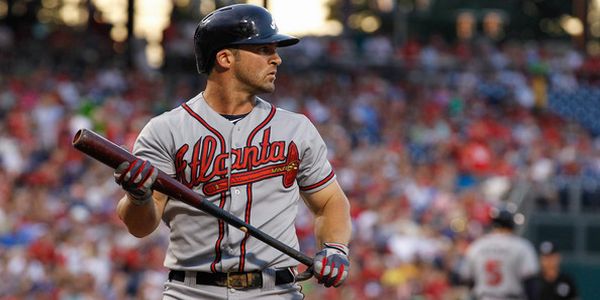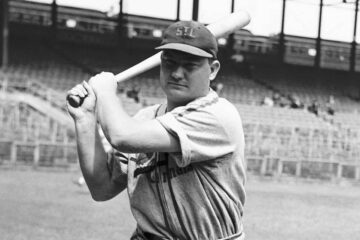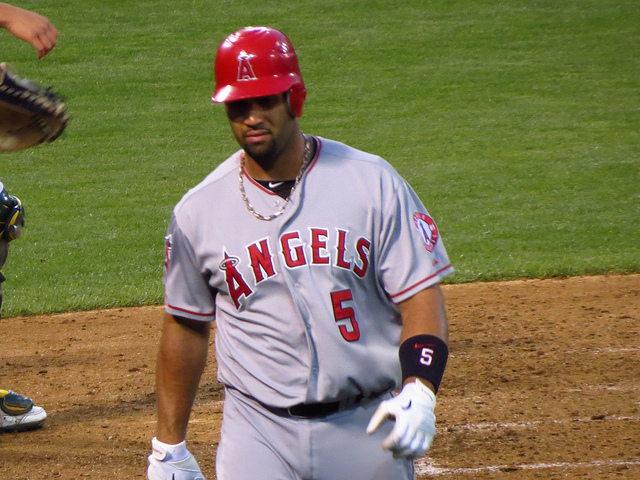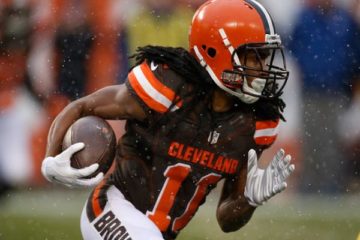2014 Fantasy Baseball: Rotters and Sleepers – Second Basemen


We continue our series of sleepers and rotters by reviewing the purpose of the series itself. Fantasy players in every sport are always in search of that elusive sleeper. Sometimes, finding the sleeper can be almost as rewarding as winning the championship. It means bragging rights at the next draft or league get together. Who is the guy that will take the credit for finding Matt Carpenter last season? Who is the guy that will take the credit for finding Aaron Hill the season before?
Finding sleepers is a matter of pride. Of course, it requires looking at guys that may have slumped the season before. This is where hunting for sleepers gets dicey. Sometimes a player may be slumping, but often times we are looking at a baseball player’s career decomposing before our very eyes. Thus, you have the term sleepers and rotters. If you haven’t already, I’d invite you to go back and visit the catchers and first basemen editions of this series. It will give you a good idea of what we are trying to find.
Dan Uggla—Atlanta Braves
No one would ever confuse Dan Uggla for Rod Carew, but few second basemen in history have brought as much power to the position as Uggla has. In eight seasons in the big leagues, he has five seasons with 30 or more home runs and he has hit 20 or more home runs in seven of those eight seasons (including last season). Obviously, there is a lot to like about Uggla. On the flip side, he hasn’t hit as high as .235 since 2010. Let’s take a look at the basics on Uggla over the last three seasons in Atlanta.
|
AVG |
HR |
Runs |
RBI |
SB |
|
| 2011 |
.233 |
36 |
88 |
82 |
1 |
| 2012 |
.220 |
19 |
86 |
78 |
4 |
| 2013 |
.179 |
22 |
60 |
55 |
2 |
Dan Uggla’s fantasy fate has gone the same as his numbers the last three seasons. He began the last three year period as a guy that was a low batting average guy but would at least would give you very good power numbers and run production numbers. Now he is a decent power threat, but with his average so low, you wouldn’t touch him with a ten foot pole. Of course, he might be a sleeper depending on how those batting average numbers get explained.
|
SO% |
BB% |
Oswing |
Contact |
BABIP |
|
| 2011 |
23.2 |
9.2 |
27.3 |
73.4 |
.253 |
| 2012 |
26.7 |
14.9 |
23.3 |
70.1 |
.283 |
| 2013 |
31.8 |
14.3 |
23.3 |
66.9 |
.225 |
As you might expect, these numbers are a mixed bag. Unraveling the puzzle is the key to determining whether we are looking at a sleeper or rotter. On the positive end, Uggla’s walk totals have skyrocketing and that seems to correspond to him swinging at fewer pitches outside the zone (Oswing). Unfortunately, that also indicates a negative. He is striking out more often in spite of the fact that he is swinging at fewer balls outside of the zone. He is making contact less often as well in spite of swinging at fewer balls outside the zone. If you are making contact at such a low rate in spite of swinging at balls in the zone then it could be an indication that your bat speed is lacking. That could be a very bad sign.
The other positive sign was a very low batting average on balls in play. At .225, we could conservatively add fifty or sixty points to that batting average with a reasonable BABIP. Even with the .225 BABIP last season, his career mark is .287. If we assume a .290 BABIP next season we would see him hitting .244 instead of .279. Add the requisite 65 points to the OBP and to his slugging percentage and we would see him well over a .750 OPS. That is of course unless something else is explaining the bad BABIP.
|
LD% |
GB% |
FB% |
HR/FB |
ISO |
|
| 2011 |
15.4 |
41.2 |
43.4 |
18.6 |
.220 |
| 2012 |
20.1 |
33.5 |
46.4 |
11.4 |
.164 |
| 2013 |
13.2 |
39.6 |
47.1 |
16.7 |
.183 |
Consistency is obviously not one of Dan Uggla’s strong suits. His line drive rate is everywhere and it was ridiculously low last season. That would probably explain the bad BABIP because batting averages skyrocket on line drives. They are generally terrible on fly balls, but fly balls are also where home runs, doubles, and triples generally come from. Generally speaking though, the key is the line drive rate. Uggla’s highest BABIP over the last three seasons came when he had his highest line drive rate.
This is where things on Uggla get interesting. Will he have a low line drive rate again or will he bounce back? Will his strikeout rate and contact rate continue to get worse? If the answer is yes then we are looking at a player that is aging rapidly and likely will be out of the game within another couple of seasons. If not, we might have a slight renaissance where sleeper status is possible. I’m not keeping my fingers crossed though.
Rickie Weeks—Milwaukee Brewers
If Dan Uggla has anything going for him, at least he has an everyday job going into the season. Rickie Weeks isn’t even guaranteed that. Weeks may have been Wally Pipped last season when he went down for the final two months with an injury. Unlike Pipp, Weeks wasn’t an all-star that was in the wrong place at the wrong time. It is more likely that the Brewers were secretly hoping that Scooter Gennett would be the real deal.
Weeks still has a chance to get his job back. Gennett is nothing like Lou Gehrig, and in terms of skills, may not even hold a candle to Weeks. At least offensively, Weeks offers power and speed that Gennett didn’t seem to produce in the minors. If he can get his act together he might very well be a decent sleeper candidate.
|
AVG |
HR |
R |
RBI |
SB |
|
| 2011 |
.269 |
20 |
77 |
49 |
9 |
| 2012 |
.230 |
21 |
85 |
63 |
16 |
| 2013 |
.209 |
10 |
40 |
24 |
7 |
One might call Rickie Weeks and Dan Uggla the same person. Both seemed to offer good power to offset their low batting averages. Uggla offered a little more power and Weeks offered a little more speed, but essentially they have been the same. The funny thing is that both players saw most of their success before the three year period even began. This lends credence to the theory that we are looking at two rotters. However, the basic numbers can often be misleading.
|
SO% |
BB% |
Oswing |
Contact |
BABIP |
|
| 2011 |
20.8 |
9.7 |
24.4 |
74.3 |
.310 |
| 2012 |
25.0 |
10.9 |
21.7 |
75.2 |
.285 |
| 2013 |
26.3 |
10.0 |
22.6 |
74.2 |
.268 |
Scouts often talk in terms of tools. Everyone has heard of the five tools and the five tool player, but the sixth tool is maybe even more important. Plate discipline is extremely important and can be measured in walk rates and Oswing rates. Unfortunately, it is easy to get lost in those and ignore the old-fashioned hit tool. Weeks seems to have good plate discipline (as measured by his walk rate and Oswing rate), yet he still swings and misses a lot (though not as often as Uggla).
The difference is that his contact rates have remained stable and his Oswing rate has improved, so we would expect a bounce back on BABIP based on that information alone. His .302 career BABIP seems like a reasonable target this season. That would put his average over .240 and perhaps return him to 2012 value. That is of course unless his batted ball statistics indicate that something else is going on.
|
LD% |
GB% |
FB% |
HR/FB |
ISO |
|
| 2011 |
16.6 |
48.1 |
35.2 |
16.3 |
.199 |
| 2012 |
16.9 |
45.1 |
38.0 |
13.1 |
.170 |
| 2013 |
18.0 |
49.4 |
32.7 |
12.5 |
.149 |
They say that the first thing to go for an athlete is speed. I can’t seem to remember the second. In all seriousness though, the rising line drive rate and rising ground ball rate should have indicated an increase in his BABIP. The problem is that as Weeks enters his early thirties it is quite possible that he has lost a step. That means he may not be able to beat out some of those grounders that he did when he was in his prime. Couple that with some obvious diminished power and you get a definite red flag.
That being said, there is no reason why his BABIP should have dipped so far. I would probably place him somewhere around .290 in BABIP this time around. This would bring him back towards his 2012 numbers and make him a viable fantasy player for at least one more season. Then again, he may have already been Wally Pipped.





